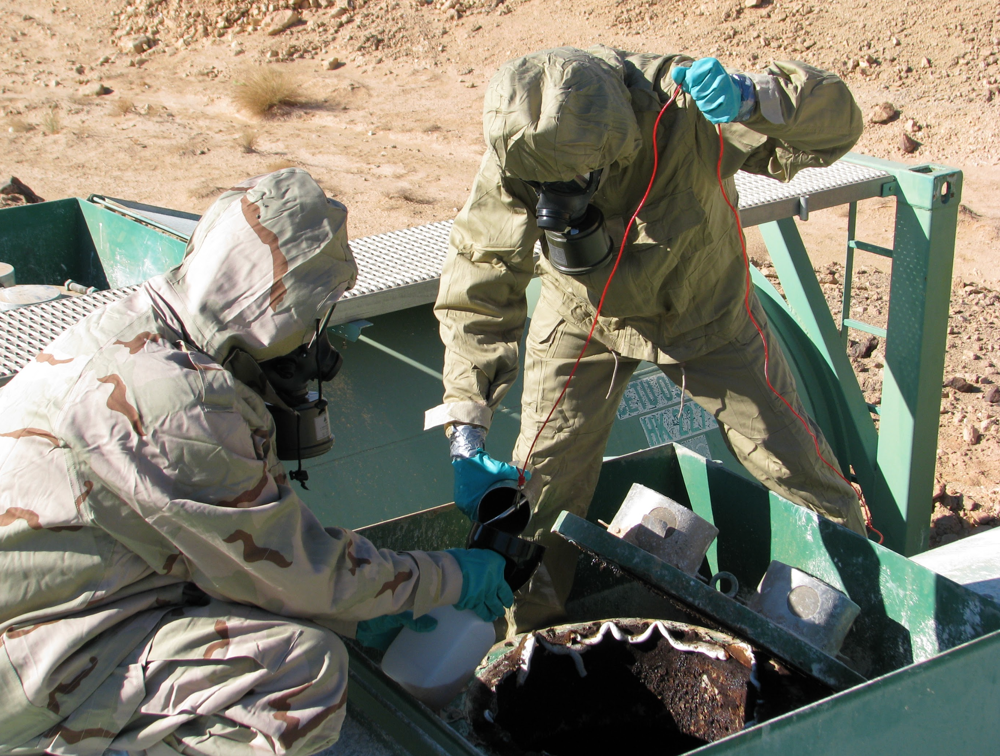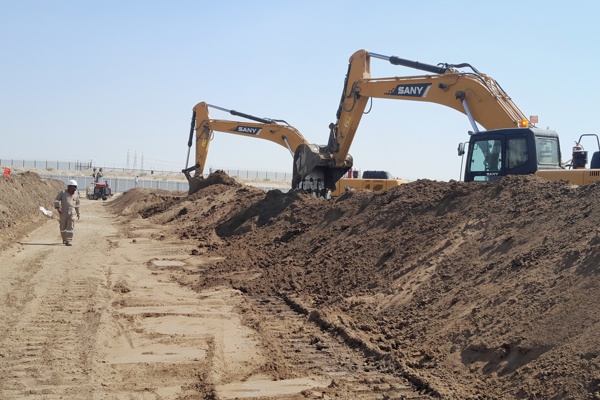Environmental assessment after a war conflict
We offer expert evaluation of the environmental state, including the detection of toxic substances, risk assessment, the proposal of optimal solutions, as well as their implementation.
We offer expert evaluation of the environmental state, including the detection of toxic substances, risk assessment, the proposal of optimal solutions, as well as their implementation.


We conduct sampling and laboratory analysis of soil, water, air, and chemical substances. In collaboration with partners, we also provide explosive ordnance surveys.

We identify and propose appropriate technological methods for neutralizing chemical substances and other sustainable solutions for contaminant removal, contributing to the minimization of health and environmental risks.

We provide consultations, training, supervision, and direct implementation work, such as soil decontamination, groundwater remediation, and waste processing.
We ensure the revitalization of affected areas
We assist not only in restoring sites contaminated with heavy metals, petroleum, toxic, and other hazardous substances to their original condition but also in long-term recovery efforts that enhance quality of life and contribute to a sustainable future.
Martin Polák
Project Manager
We conduct surveys, remediation, international transport, and disposal of hazardous waste, including the preparation of related documentation. We handle both liquid and solid hazardous waste.
We handle the processing or disposal of rubble and other waste resulting from the destruction of buildings and infrastructure. We also take care of soil and structures contaminated by chemical leaks.
We carry out biotechnological, chemical, and physical decontamination of soils and construction debris contaminated by the use of war weapons. We address the aftermath of oil field fires and the use of defoliants in war conflicts.
We provide decontamination of compromised water sources and the restoration of damaged ones. We also build new wastewater treatment plants.


Survey and remediation plan for the area surrounding a fuel storage facility contaminated by petroleum substances due to bombing at the beginning of the war in Ukraine

Remediation of hydrocarbon-contaminated soil resulting from the Iraq-Kuwait war

Monitoring former air bases contaminated with herbicides/dioxins during the war and proposing solutions to ensure safety
Are you interested in environmental assessment after a war conflict or do you have a question? Fill out a simple form and we will get back to you within 24 hours.
You can also reach us on the phone: +420 235 522 252
or via e-mail at info@dekonta.cz
As a result of war conflicts, ecosystems are damaged, and soil, water, and air are contaminated, negatively impacting not only local biodiversity but also the health of the population.
Most conventional weapons contain toxic components, flammable and incendiary substances, heavy metals, and other hazardous materials.
Long-term pollution after a war conflict is primarily caused by the following factors:
Chemical substances and toxic waste
War conflicts often leave behind chemical contamination caused by explosives, ammunition, and weapons, including residues of fuels, oils, and especially toxic substances, including those from chemical weapons. These substances can seep into the soil, water, and air, leading to long-term contamination of entire ecosystems.
Destruction of infrastructure and industrial areas
Bombing and clashes in industrial regions can result in harmful leaks from destroyed factories, chemical storage facilities, or energy plants. These leaks can cause permanent environmental damage.
Waste and remnants of military material
Unexploded ordnance or abandoned military equipment can contaminate large areas. This material is not only toxic but also poses a risk due to the presence of unexploded munitions.
Ecosystem degradation
Prolonged conflicts can destroy native vegetation, leading to soil erosion, loss of biodiversity, and other environmental issues that may persist for years or even decades.
Chaoyang is a bustling district located in the heart of Beijing, China. It is known for its modern architecture, thriving business district, and vibrant nightlife. The area is home to many high-end shopping malls, luxury hotels, and fine dining restaurants, as well as cultural landmarks such as the China Red Sandalwood Museum and the Chaoyang Park. With its convenient location and easy access to public transportation, Chaoyang is a popular destination for both tourists and business travelers alike. If you're looking for a lively and cosmopolitan experience in China, Chaoyang is definitely worth a visit.